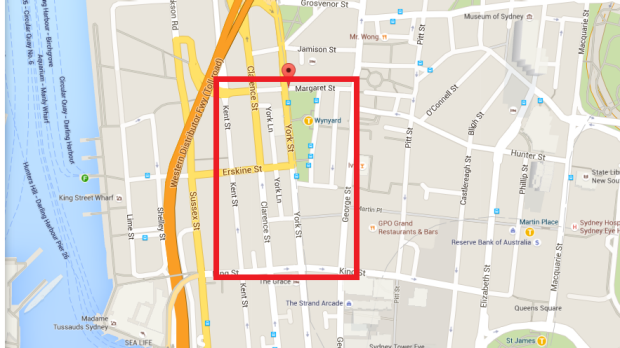
Five water cooling towers in the Sydney CBD have tested positive for legionella as health authorities announce two more people have contracted legionnaires’ disease.
The two new cases of the pneumonia-like infection bring the total number of patients linked to the recent outbreak to five, NSW Health said.
Both patients are men in their 40s and 50s, and were in the CBD at a similar time as the first three patients.
The original three cases included a man in his 80s and two women in their 30s. One is in a critical condition, another is stable and the third has been discharged from hospital.
The bacterial lung infection causes fever, chills, a cough and shortness of breath, and can be fatal.
Dr Vicky Sheppeard, the director of the NSW Health Communicable Diseases Branch, said preliminary investigations identified five cooling towers that tested positive to legionella.
Environmental health teams inspected all 89 towers and other potential sources in the area of common exposure.
The original testing area included 67 cooling towers and stretched between Margaret, Kent, King and George streets, where all three patients had spent time before their symptoms began. It is understood this area has been widened to include an additional 22 towers.

“Contaminated cooling towers are a common source of legionnaires’ disease outbreaks but they can often be contaminated without ever causing disease,” Dr Sheppeard said.
“Further testing on these towers is being undertaken to determine whether or not one or more of these towers may be the source of the recent outbreak.

But it is possible that the source will never be identified because the contaminated tower was cleaned before it was inspected.
Legionnaires’ occurs after a person breathes in contaminated water or dust, and outbreaks have been associated with the air-conditioning units used in large buildings.
Legionella bacteria get into the water supply that cools the system and multiply.
Passers-by can contract the disease from contaminated vapour drifting in the wind outside.
Those most at risk include middle-aged and older people, heavy smokers and those with chronic lung disease.
Legionnaires cannot be transmitted person-to-person.
“NSW Health and the City of Sydney have ensured appropriate regulatory action on these towers is under way, including orders requiring cleaning and disinfection,” Dr Sheppeard said.
Nine people were hospitalised and a man in his 80s died as a result of the outbreak in the CBD in early March, while three were hospitalised in an outbreak in Kogarah later that month.
The last investigation, which focused on cooling towers and other potential sources of contamination in most of the blocks between Bathurst, King, Elizabeth and George streets, identified legionella in 13 cooling towers, Dr Sheppeard said.
NSW Health has urged the owners of buildings in the CBD to ensure their cooling towers are operated and maintained according to the requirement of the Public Health Act.
Under the Public Health Act 2010, building owners or occupiers that fail to maintain their cooling towers could be served with an improvement notice and ordered to carry out maintenance and repair.
If high levels of legionella bacteria are found, a prohibition notice may be served for immediate shutdown of cooling towers for emergency decontamination works, and will not be allowed to operate until sampling results are received and a clearance certificate issued.
NSW Health also has a legionella working group comprised of experts in this field that is actively reviewing the recent outbreaks and considering whether any new measures are required to strengthen prevention and control activities.
